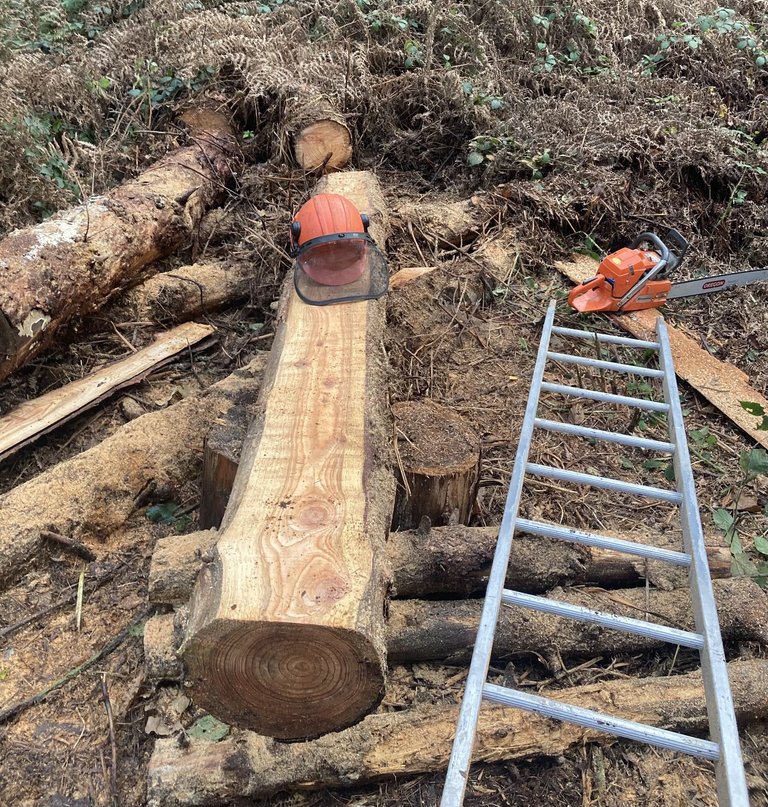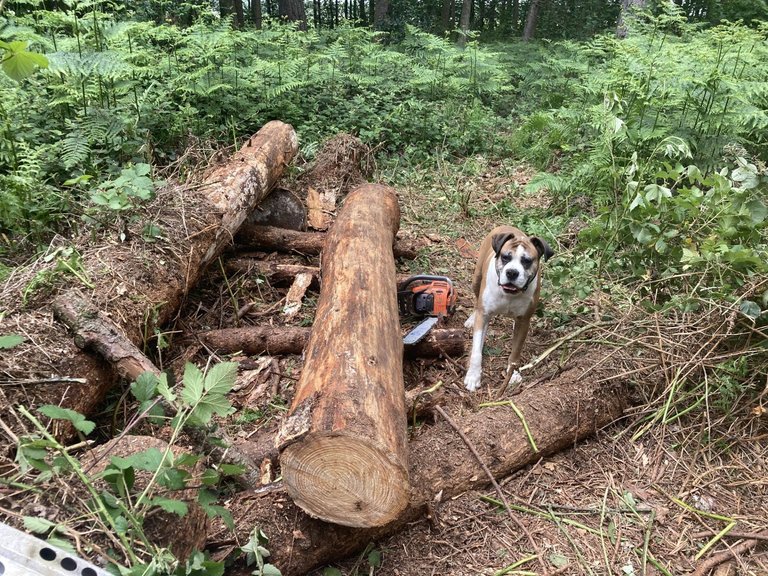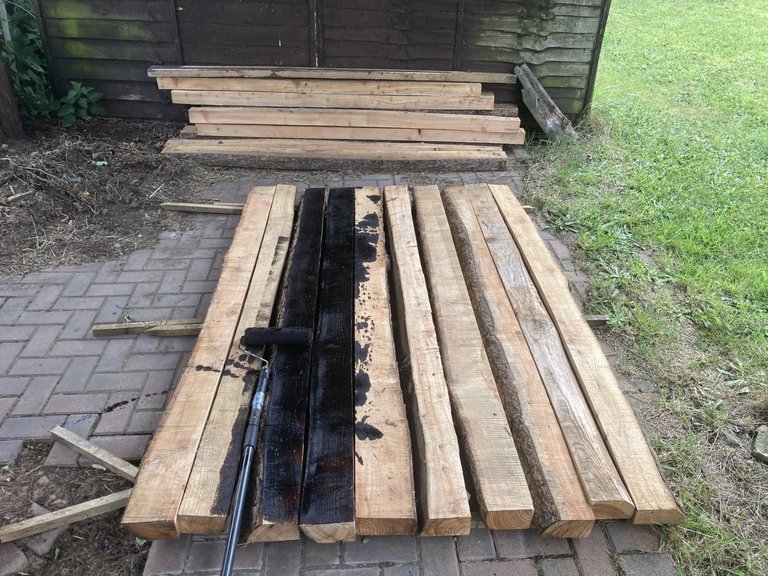Hello
I have some old photos from when we were making fence posts.
We used a Husky 365 chainsaw and an alaskan saw mill to make the posts. The slabs were cut 3inch deep so we could used a 3" circular saw to cut the posts from the slabs

MrGee checking out the quality of the timber


The trees are Japanese Larch, which grow very straight. The timber is highly rot resistant and much stronger than pine. I understand its used to make house cladding and yachts.

We cut them posts with a 3" circular saw. We deliberalty left some of the edges on the posts for a home made look. We treated the post with Creosote first and Bitumin paint second. Post holes had pebbles put in the bottom. We are on sandy soil here so we are hoping the timber type, treatment and the soil will mean they dont rot that easily (fingers crossed).

Thanks for reading this far !
Congratulations @llag! You have completed the following achievement on the Hive blockchain And have been rewarded with New badge(s)
Your next target is to reach 300 upvotes.
You can view your badges on your board and compare yourself to others in the Ranking
If you no longer want to receive notifications, reply to this comment with the word
STOPnice post. we don't get much here but larch is great for outdoor structures.
Have you ever tried 'charring' (burning) the exterior of it to help it be more rot resistant? I have not had much experience with any 'larches' but am curious how it holds up.
We read alot about larch before deciding on the type of treatment. Larch is naturally rot resistant, some people would argue it should not need any treatment. Ours is Japanese larch which is slighly less resistant that other types. They make yatchs out of it and outer boarding for upmarket houses here in the UK. Due to lack of experience we didnt want to damage any of the natural resitance by burning/carring. If they had been pine we would have been tempted to burn. Cheers
Very cool! Yeah, sometimes the burning/charring can have an adverse effect. It seems like every region has at least one rot resistant wood. Here black locust reigns supreme when it comes to rot and bug resistance. Generally speaking it will last between ninety to hundred years... even if submerged in water and muck! It would be interesting to get a list together of various rot-resistant woods from around the world.
Cheers and Happy New Year!